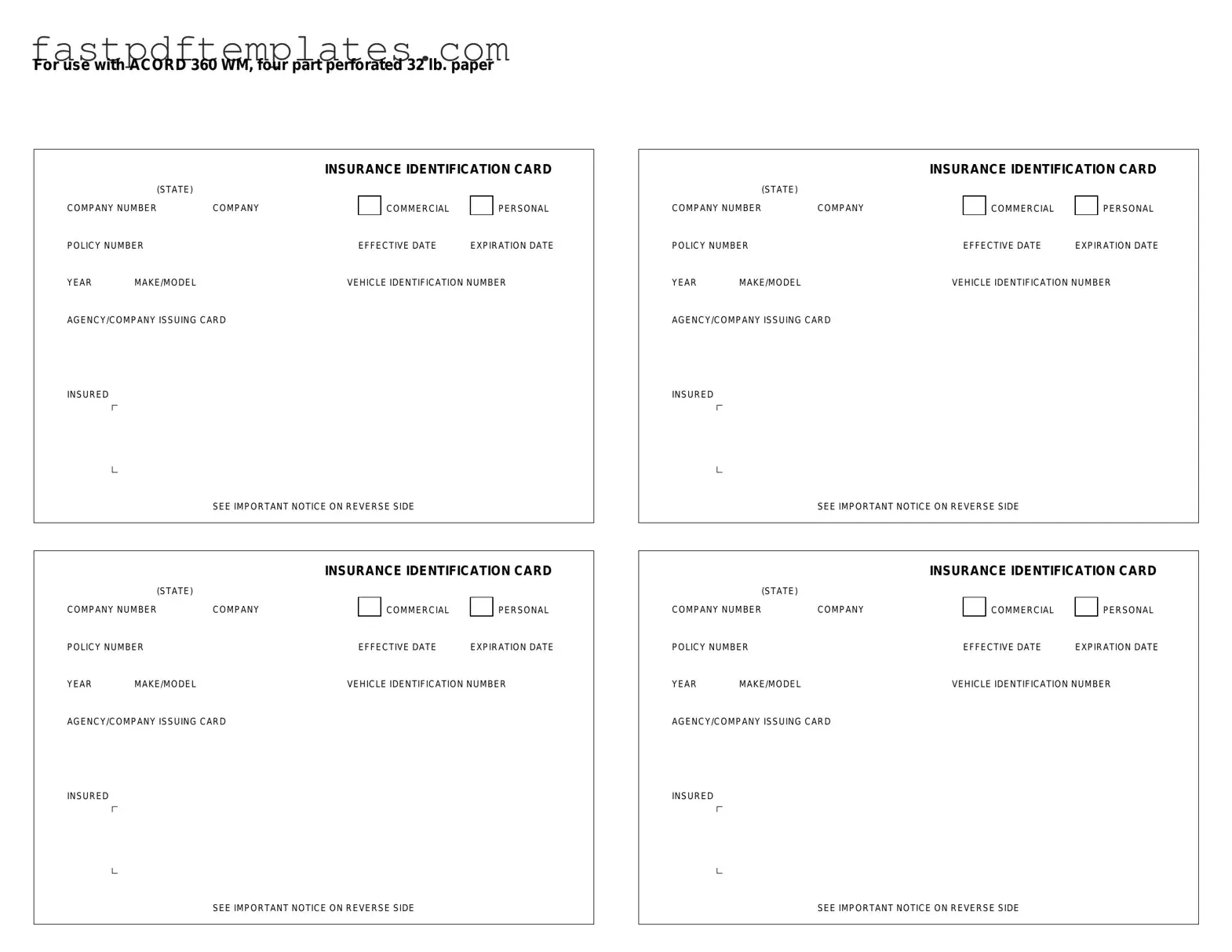The Acord 50 WM form is a widely used document in the insurance industry, specifically designed for workers' compensation insurance. It serves as a comprehensive application that captures essential information about a business and its employees. Similar in purpose and structure, the Acord 130 form also functions as an application for commercial insurance. It collects data about the business's operations, coverage needs, and risk exposures, ensuring that insurers have the necessary information to assess the risk and provide appropriate coverage options.
Another document akin to the Acord 50 WM is the Acord 25 form, which is used for property and casualty insurance applications. This form requests detailed information about the property to be insured, including its location, value, and any existing risks. Like the Acord 50 WM, the Acord 25 helps insurers evaluate the risk profile of the applicant, ultimately influencing the terms and premiums of the insurance policy.
The Acord 126 form is also comparable, as it is utilized for general liability insurance applications. This form gathers information about the applicant's business operations, including the types of services offered and the number of employees. By collecting this data, insurers can determine the appropriate coverage limits and premiums, similar to the process followed with the Acord 50 WM.
In addition, the Acord 27 form serves as a certificate of liability insurance. While it differs slightly in function, it still shares similarities in the information required. The Acord 27 provides proof of insurance coverage to third parties, detailing the types of coverage in place and the limits. This form, like the Acord 50 WM, emphasizes the importance of transparency in the insurance process.
The Acord 51 form, which is used for commercial auto insurance applications, also bears resemblance to the Acord 50 WM. It collects data about the vehicles owned or operated by a business, including usage and driver information. Both forms aim to provide insurers with a clear understanding of the risks involved, allowing for accurate underwriting and premium calculations.
Another document similar to the Acord 50 WM is the Acord 140 form, which is designed for personal lines insurance applications. This form gathers information about an individual's personal property, auto, or liability needs. Like the Acord 50 WM, the Acord 140 is essential for assessing risk and determining appropriate coverage options for the applicant.
Finally, the Acord 45 form, which is used for life insurance applications, shares a common goal with the Acord 50 WM: to evaluate risk. The Acord 45 collects personal information about the applicant, including health history and lifestyle choices. By gathering this information, insurers can make informed decisions regarding coverage and premiums, paralleling the process seen in the Acord 50 WM form.


